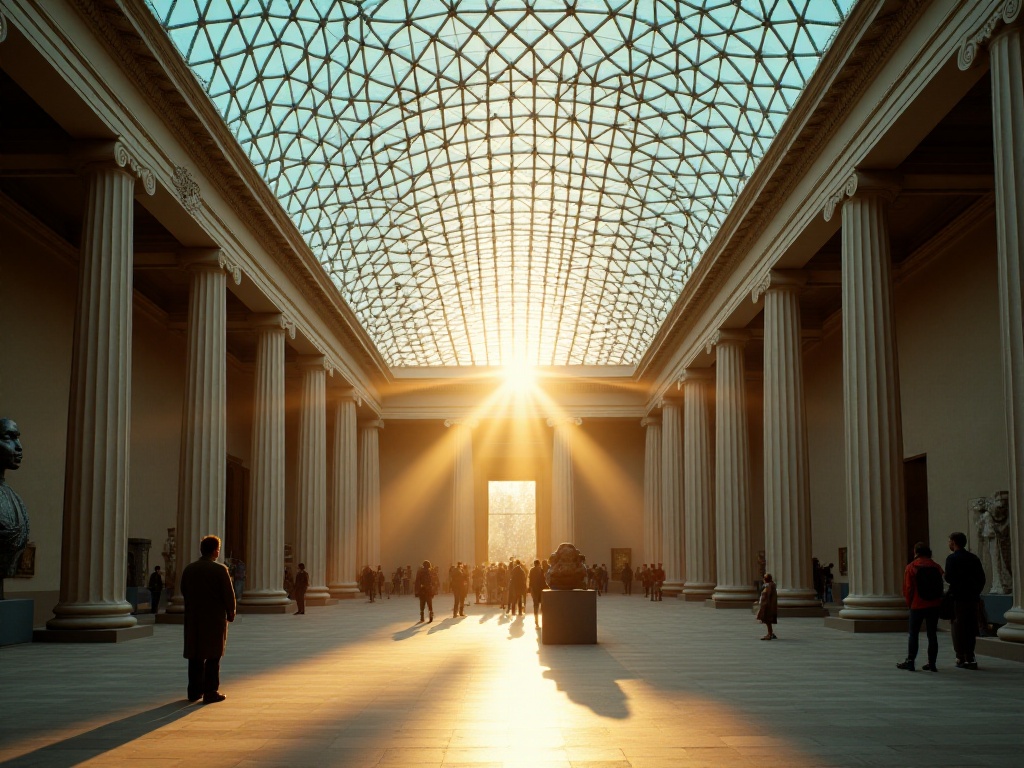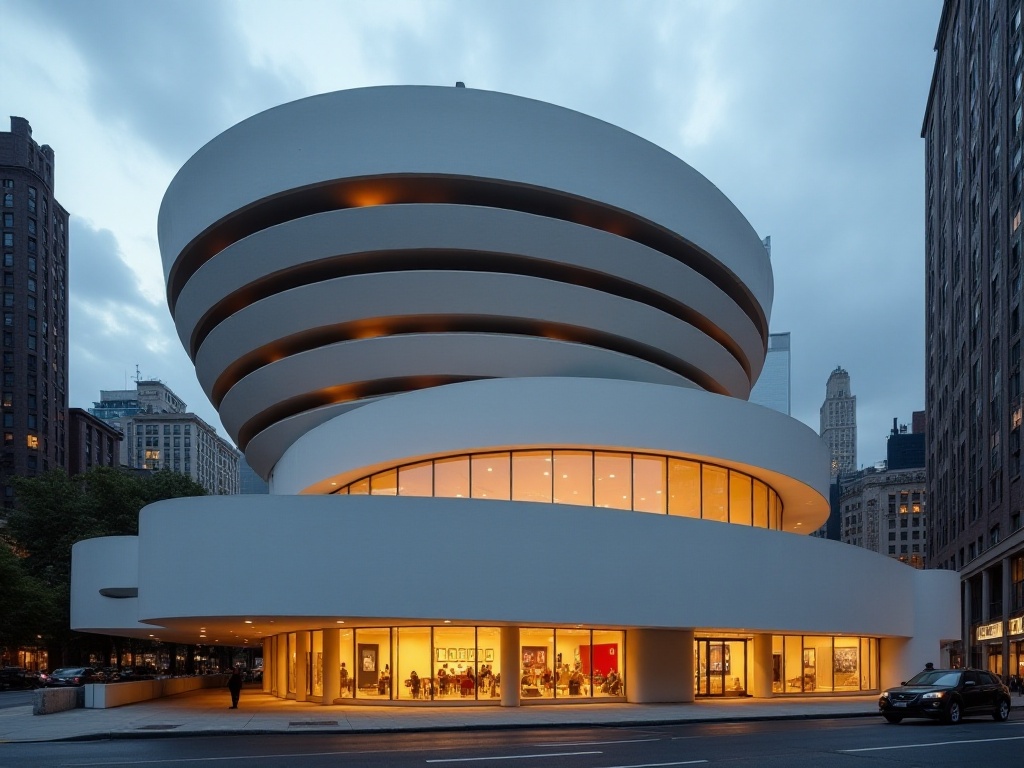Pre-Trip Preparation
As a blogger who often travels solo, I absolutely love London's museums! The number of museums here is staggering, with nearly 20 free national museums attracting over 27 million visitors annually. At first, I was completely overwhelmed and didn't know where to start, but gradually I figured out a strategy.
First, it's essential to do your homework beforehand. On my first visit, I naively thought I could just wander around, but ended up missing many excellent exhibitions due to poor planning. Now, before each visit, I check the official websites for special exhibitions, as some are temporary and might not come back for a long time.
Each museum has its own unique features and highlights. For example, the British Museum is famous for its ancient civilization artifacts, while the Science Museum is known for its interactive exhibitions. I recommend planning your itinerary based on your interests. If you love art, prioritize the National Gallery and Tate Modern; if you're into technology, don't miss the Science Museum and Natural History Museum.
Transportation Tips
Speaking of transportation, London's tube and bus system is incredibly convenient! Although the tube map might seem complicated at first, you'll get used to it quickly. I strongly recommend getting an Oyster card - it's a real money-saver.
I remember my first time in London, not knowing about the Oyster card, I bought individual tickets each time I took the tube. It was not only expensive but also really inconvenient. Later I learned that the Oyster card works for both tube and bus travel, and it's much cheaper than single tickets.
If you're planning to stay in London for a week, I suggest buying a 7-day pass. I did the math: a daily tube ticket costs £13.50, while a 7-day pass is only £35. Assuming you take the tube every day (which is almost inevitable in London), you can save nearly £60 in a week! That's the price of a Michelin-starred dinner.
The tube stations are also strategically located, with major museums typically near stations. For instance, the British Museum is accessible from either Russell Square or Holborn station; the Science Museum and Natural History Museum are right next to South Kensington station. I recommend downloading a tube app to check routes and transfer information in real-time, especially useful when there's maintenance work or temporary changes.

Must-Visit Spots
When it comes to London museums, the British Museum is absolutely top-tier! Established in 1753, this museum welcomes over 6 million visitors annually - just this number alone is impressive.
The first time I stood at the entrance of the British Museum, I was stunned by the magnificent Greek Revival architecture. Those massive columns seemed to tell stories of ancient history, and the glass dome in the Great Court is absolutely breathtaking. Speaking of this dome, it's Europe's largest covered square, spanning 6,100 square meters. Looking up from below, with sunlight streaming through the glass, it's a perfect photo spot.
The collections are even more remarkable, from Egyptian mummies to sculptures from the Parthenon, from Chinese oracle bones to Persian reliefs - it's like a three-dimensional history of human civilization. I always spend extra time in the Egyptian gallery, marveling at the exquisite mummies and burial goods that showcase the wisdom of ancient peoples.
The Rosetta Stone is one of my favorite exhibits. This stone is inscribed with the same content in three different scripts: Ancient Egyptian hieroglyphs, Demotic script, and Ancient Greek. It was through this stone that people were able to decipher Egyptian hieroglyphs. Every time I see it, I imagine Champollion's excitement when he decoded the script.

Hidden Gems
The Victoria and Albert Museum (V&A) is definitely London's most underrated treasure! Housing over 2.4 million pieces of art and design works, many tourists focus on the British Museum and National Gallery, overlooking this paradise of decorative arts.
Can you imagine that they have one of the world's earliest photographs here? Taken in 1839, this photograph gives us a glimpse of the world from over 180 years ago. Additionally, there's an amazing fashion collection, from medieval gowns to modern haute couture - it's a fashion lover's paradise.
My favorite is their jewelry gallery, featuring designs from various periods. Once, I spent over half an hour admiring a Victorian necklace, captivated by its intricate craftsmanship and unique design. Later research revealed it was once part of the British Royal Collection.
The courtyard garden is also a perfect resting spot. It features a massive glass roof, creating unique light patterns on the marble floor as sunlight filters through. In summer, many locals bring sandwiches here for picnics, enjoying leisurely afternoon moments.

Money-Saving Tips
In London, where every square foot is precious, having so many world-class museums for free is an incredible blessing! Besides the British Museum, the National Gallery, Tate Modern, Natural History Museum, Science Museum, and others are all completely free.
I calculated that these free attractions would save you at least £200 in entrance fees. In other European cities, museums of similar scale often charge over €20 for admission. The money saved could be spent on a Michelin-starred meal or some British high street fashion.
Besides free admission, many museums regularly host free lectures and workshops. I once attended a jewelry design workshop at the V&A, where I not only learned a lot but also met like-minded friends. These event details are usually posted on the museums' official websites in advance, so it's worth keeping an eye on them.
Museum shops are also great places to save money. While many think museum shop items are expensive, they often have special offers. I found discounted art books at the British Museum shop, much cheaper than regular bookstores. Plus, their carefully selected merchandise is quality-guaranteed and makes great gifts.
Time Management
Timing is crucial for exploring London's museums. Based on my multiple visits, I strongly advise avoiding weekends. Statistics show weekend visitor numbers are usually double those of weekdays, especially on rainy days when museums become perfect shelters, getting extremely crowded.
The best visiting times are within the first hour of opening or after 3 PM. Early morning right after opening, the galleries are particularly quiet, allowing for peaceful appreciation and uninterrupted photos. After 3 PM, most tour groups have left, creating another relatively quiet period.
I recommend allocating at least half a day for each museum. Even a full day might not be enough for large museums like the British Museum. I usually divide my visits into sections, like exploring the Egyptian galleries in the morning and Greek-Roman sections in the afternoon, which prevents fatigue and allows better understanding and appreciation of the exhibits.
Pay special attention to adjusted opening hours during holidays. During Christmas and New Year periods, many museums reduce their hours, some even close completely. Always check official websites for opening information before visiting. I once went to the Science Museum during a holiday, only to find it had closed early that day - a wasted trip.
In-Depth Experience
For deeper understanding of the stories behind exhibits, I highly recommend joining free guided tours! The British Museum offers Chinese-language tours at multiple times daily, each lasting about 40 minutes. The guides are professionally trained and share not just basic exhibit information but also fascinating historical stories.
Statistics show that visitors who join tours spend an average of 3 hours in museums, compared to 1.5 hours for regular visitors. This difference mainly stems from having guide explanations, which help us better understand the value and significance of exhibits, naturally wanting to see and learn more.
Besides regular tours, many museums offer specialized theme tours. The Science Museum has space exploration tours detailing important moments in human space history. The V&A offers fashion-themed tours exploring clothing design and trend evolution across different periods.
I particularly enjoy evening opening events. These feature special exhibitions, lectures, or performances. Once at a British Museum evening event, they invited ancient Egyptian music performers to play in the Egyptian gallery, with special lighting effects creating an atmosphere that transported visitors back to ancient Egypt.

Practical Tips
Photography is allowed in museums, but remember to turn off your flash. Flash can damage certain exhibits, especially ancient textiles and paintings. I've seen many visitors reminded by staff about flash photography, and some exhibit areas completely prohibit photography.
Although exhibits look tempting, never touch them. I once saw a child try to touch an ancient Egyptian sarcophagus and was immediately stopped by staff. These exhibits are priceless treasures, and even slight damage could be irreversible. If you want to examine items closely, use the magnifying glasses provided by the museum.
Most museums offer free storage for luggage and coats. This is especially thoughtful, as carrying bags while touring museums is both tiring and risky for exhibits. However, during peak seasons, storage areas can get crowded, so arrive early.
Many museums offer free WiFi, though signals might be unstable. I recommend downloading official museum apps or electronic guides beforehand, so you can access exhibit information without internet. Some museum apps also provide audio guides, like having a private tour guide.
Food Exploration
Museum fatigue and hunger are common issues, but don't worry - each museum has its own cafes and restaurants. I particularly love the Great Court Cafe at the British Museum, where their afternoon tea set costs around £25, considerably cheaper than outside establishments.
The Great Court Cafe's environment is excellent, situated under the iconic glass dome. Enjoying tea while admiring the architectural beauty of the dome is particularly pleasant. Their scones are the best I've had - crispy outside, soft inside, perfect with clotted cream and jam.
The V&A Cafe is also unique, being the world's first museum restaurant. It maintains Victorian-era decor with beautiful murals and ceiling decorations. Their lunch is excellent too - I especially recommend their roasted salmon with seasonal vegetables, very reasonably priced.
For more casual dining, there are many good restaurants around the Science Museum and Natural History Museum. My favorite is an Italian restaurant near South Kensington station, offering authentic pizza and pasta at affordable prices.

Final Thoughts
After numerous visits to London's museums, I increasingly feel these places aren't just artifact repositories but windows into human civilization. Each exhibit tells a moving story, each gallery opens a door to the past.
At the British Museum, I can travel back to ancient Egypt and feel the pharaohs' majesty; at the Science Museum, I can trace humanity's technological development; at the V&A, I can appreciate artistic beauty from different periods. These experiences fill me with awe for human creativity and wisdom.
Most touching is that these world-class museums are free to the public, reflecting British emphasis on cultural dissemination and education. Seeing children curiously examining exhibits and elderly visitors contemplating artworks from benches, I realize this is the greatest significance of museums.
London's museums are like never-ending books, with new discoveries each visit, each exhibit telling its own story. They're not just tourist checkpoints but places where one can quietly appreciate human civilization's charm. I look forward to returning and discovering more unknown wonders.


